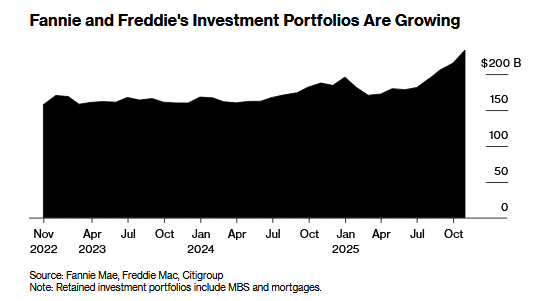The Failure of the ‘New Economics’ thoroughly demolished the Keynesian system. Unfortunately, this “economic demolition” as Rothbard called it (Hazlitt 2007 [1959], xvi), went ignored by the mainstream despite it carrying implications that would have prevented the decline in theoretical vigor of mainstream economics that was Keynesianism. Hazlitt’s argument against Keynesianism was more than a mere theoretical critique; it was a robust argument fortified by sound economic theory and history. One area where Hazlitt excelled was in his critique of Keynes’ critique of the classical doctrine on unemployment.
This paper will summarize Hazlitt’s discussion of Keynes’ rejection of the classical theory of unemployment. Secondly, Hazlitt’s arguments will be applied to evaluating modern macroeconomic theories of unemployment, particularly the searching, shirking, and matching models of unemployment. Ultimately, it is the hope to show how modern macroeconomists have more of a reliance on microeconomics, but they still have things to learn from the sound economics espoused by Hazlitt.
Contra Keynes on Unemployment and Wages
Unemployment, being the economic state in which the quantity of labor supplied exceeds the quantity of labor demanded, is traditionally viewed as temporary (Hazlitt 2007 [1959], 20). Market forces work to eliminate such an excess supply. Problems arise when the government institutes price controls, such as minimum wages. The artificially high wages cause more laborers to enter the workforce than there are jobs being offered by employers. The result? Supply, or the marginal laborer, is frustrated.
This is the standard position of what Keynes called the “classical” economists, markets are constantly working to eliminate disequilibrium through the bidding up and down of prices in order to equilibrate the quantity supplied and demanded of various goods. The supply and demand for labor is no different. Keynes, however, attempts to deny this insight.
In Keynes’ view, the market is inherently disequilibrating. Rigid (“sticky”) wages exist that prevent labor markets from equilibrating. Policy conclusions from this position often take the form of markets being flawed and in need of the government to correct them.
What reason does Keynes give for this? He unwarrantedly assumes that laborers care more about their nominal wage rather than their real wage (Hazlitt 2007 [1959], 17):
Ordinary experience tells us, beyond a doubt, that a situation where labor stipulates (within limits) for a [nominal wage] rather than a real wage, so far from being a mere possibility, is the normal case. Whilst workers will usually resist a reduction of [nominal wages], it is not their practice to withdraw their labor whenever there is a rise in the price of wage-goods. It is sometimes said that it would be illogical for labour to resist a reduction of real wages… But, whether logical or illogical, experience shows that this is how labour in fact behaves (Keynes 1964, 9).
Hazlitt dispatches with this position, stating, “The big American unions all have their “economists” and “directors of research,” are acutely aware of the monthly changes in the official Consumer Price Index [CPI],” (Hazlitt 2007 [1959], 18). Furthermore, many labor contracts provide for automatic wage adjustments to reflect changes in CPI (Hazlitt 2007 [1959], 18). All of this is to say that the labor union leadership and members are not stupid or irrational. They, in fact, are aware of the differences between nominal and real wages to the contrary of what Keynes states, states without evidence.
Keynes further calls into question the classical position by stating that the classical explanation for unemployment during the Great Depression is “clearly not supported by facts” and “implausible,” (Keynes 1964, 9), but Hazlitt again disposes of Keynes' assertions, stating that there is “no real argument” provided by Keynes, just bad assumptions (Hazlitt 2007 [1959], 19). We are to merely accept Keynes’ “ex cathedra” statements.
Hazlitt rightly points out that Keynes is overstating the classical position in order to tear it down (Hazlitt 2007 [1959], 19). The strawman Keynes posits is that the labor market failed to equilibrate, thus causing the Great Depression; however, no economist was suggesting such a thing prior to the Depression (Hazlitt 2007 [1959], 19). Wages being above the equilibrium wage rates certainly had something to do with the unemployment during the Great Depression, but that is only one part of that complex phenomenon.
Hazlitt also notes that the reliance of Keynes on the idea of rigid prices (Snowden and Vane 2005, 65-66), or the fact that incentives can hold wages higher than equilibrium wages, actually “tacitly accepts” the theory that unemployment is caused by wages higher than the equilibrium wage (Hazlitt 2007 [1959], 19).
The framework that Keynes is working from is muddled in confusion and ambiguity. Hazlitt provides the escape: sound economic theory. A commitment to the “classical” theory of price and wage determination is the best explanation for unemployment of labor and resources. Hazlitt summarizes this nicely, stating:
If the price of any commodity or service is kept too high (i.e., above the point of equilibrium) some of that commodity or service will remain unsold. This is true of eggs, cheese, cotton, Cadillacs, or labor. When wage-rates are too high there will be unemployment (2007 [1959], 263).
This is the position of the Austrian school and other sound microeconomists. This insight is built up from the economic theory of Mises (1998 [1949]) and Rothbard (2009), which start from undeniable, self-evident axioms. Perhaps the best defense of the validity of this approach comes from Hoppe who states that the axiom that humans act
…fulfills the requirements precisely for a true synthetic a priori proposition. It cannot be denied that this proposition is true, since the denial would have to be categorized as an action - and so the truth of this statement literally cannot be undone. And the axiom is also not derived from observation - there are bodily movements to be observed but no such things as actions - but stems instead from reflective understanding (1995, 22).
From this basic axiom, Austrians derive various principles, such as the law of diminishing marginal utility, which is implicit in every action. Applying this principle to the supply and demand in labor markets, we arrive at the conclusion that prices above the wage where demand and supply intersect, quantity supplied of labor exceeds quantity demanded; therefore, unemployment results.
This is more or less the approach of the Austrian school and consequently the approach Hazlitt, being a follower of Ludwig von Mises, takes in economics. This approach should be adhered to rather than the ad hoc mess that is Keynesianism.
A Microeconomic Turn in Macroeconomics
Unfortunately, Hazlitt did not spark a microeconomic turn in macroeconomics. However, he did precede the reorienting of macroeconomics on microeconomic grounds by other scholars. For example, Robert E. Lucas Jr. helped introduce expectations into macroeconomic models, which produced a more economically grounded macro (Snowden and Vane 2005, 220).
In the realm of labor economics, various scholars posited reasons why the equilibrium wage rate may not prevail in a free and unhampered market. Unemployment may occur due to job search problems (McCall 1970), the need for a disciplinary mechanism against shirking workers (Shaprio and Stiglitz 1984), or the result of a job matching problem (Mortensen and Pissarides 1994).
All of these explanations are not necessarily wrong. All can and do occur in a free and unhampered market. These relatively more micro-oriented theories as to why unemployment may persist are more sound than any ad hoc explanation provided by orthodox Keynesians.
These explanations generally rely on friction, rigidity, stickiness, or whatever one wants to call it. Microeconomists have an ambiguous term of their own for this called transaction costs (Coase 1937). Transaction costs in this context can be roughly defined as the cost of using the price system. Also relevant for at least the Shapiro-Stiglitz explanation, the definition proposed by Allen (1991) is also relevant; transactions costs are the costs associated with establishing or maintaining property rights. This is clearly shown in the Shapiro-Stiglitz theory.
There is nothing economically unsound about these basic insights in abstract. Admittedly, the mathematical method that Keynes and these later scholars apply is seemingly redundant. Hazlitt seems to think this as well, stating that many of the diagrams drawn are “merely analogies, metaphors, visual aids of thought, which should never be confused with realities,” (2007 [1959], 102). In essence, focus on theory, not the redundant and misleading diagrammatic and mathematical representations of that theory. The mathematics can lead to improper conclusions such as the negative welfare conclusions of unemployment found in Shapiro and Stiglitz (1984).
With that being said, the theory of Keynes leans too much on the use of ad hoc models, whereas these later scholars seem to have a greater grasp on actual economic theory even if these later scholars have significant deviations from sound economic theory. Furthermore, the policy conclusions of these later scholars are also less government oriented. Rather than have the fiscal or monetary authorities intervene, the solution to unemployment might be better worker discipline measures or technologies that help lower the cost of matching workers with jobs or those that help workers find jobs. Unfortunately, some of these scholars still suggest government intervention as a tool for eliminating unemployment (Shapiro and Stiglitz 1984), but one can easily see how most of these theories can vindicate the free market’s position in eliminating unemployment.
However, the specter of unemployment still hangs over the economy, and the political authorities are faced with the choice between doing nothing or doing something. They invariably do something. Even if the right thing to do in a particular circumstance is to allow the free market to take care of a problem, they will be spurred by the prospect of bad employment statistics to take fiscal or monetary action in order to prevent these forms of unemployment from occurring.
As superior as these later scholars are to the traditional Keynesians, the option of government intervention remains open. This possibility partially stems from a confused classification of unemployment and a non-economic understanding of how economic actors respond to frictions.
Keynes posits 3 forms of unemployment: frictional, voluntary, and involuntary (1964, 6). Frictional relates to the kind described above, unemployment that results from transaction costs. Voluntary is the kind in which laborers leave the workforce because they are unwilling to work for the present wage. But what is involuntary unemployment? This third term creates confusion.
Hazlitt notes:
Here is a classification that would trouble any logician. Unemployment must be either voluntary or involuntary. Surely these two categories exhaust the possibilities. There is no room for a third category. "Frictional" unemployment must be either voluntary or involuntary. In practice it is likely to be made up of a little of each. "Frictional" unemployment may be involuntary through illness, disability, failure of a firm, unexpected cessation of seasonal work, or discharge. "Frictional" unemployment may be voluntary because a family has moved to a new place, because a man has relinquished an old job in the hope of getting a better one, because he thinks he can get more pay than he is offered, or because he is taking a vacation between jobs. Such unemployment is the result of a decision, good or bad, on the part of the man who is unemployed. “Friction,” though a traditional term, is perhaps not the most fortunate metaphor to describe it (2007 [1959], 15-16).
Hazlitt is correct. The division between unemployment into three groups is seemingly illogical. I would agree with the division into voluntary and involuntary that Hazlitt provides; however, our understanding of both should be reworked slightly.
The frictional unemployment discussed so far does have an involuntary aspect to it: the unemployed worker did not choose to be unemployed. However, there is a voluntary aspect to it as well: the employer voluntarily terminated the relationship.
Solely defining unemployment that results from the holding wages above the equilibrium wage rate as involuntary paints unemployment as a transgression against the laborer rather than a just and voluntary decision made by the employer for the benefit of the employer. This misunderstanding implicit in the term “involuntary employment” creates an imperative for someone to intervene and help the exploited worker. This gives the government the justification it needs to intervene to eliminate the discrepancy between current employment levels and the ethereal “full employment” level.
Unemployment should be viewed as when one or both parties to an employment contract decide that the relationship no longer benefits them. This should not be viewed as a bad thing, but a good thing.
Lastly, friction should not be viewed as a negative thing. Some may look at friction and say, “Curse this friction for not allowing the market to equilibrate,” however friction is just when an economic agent decides that the theoretical equilibrium is not worth being reached. In the context of the Shapiro-Stiglitz theory, the equilibrium wage rate is not reached because of the transaction costs associated with employing workers. If employers in such a situation were forced to pay the equilibrium wage, unemployment attributable to that transaction cost would be eliminated, but the employers would be made worse off.
Forcing the assumed equilibrium price or wage to be charged or using the money of others to offset the cost of combating transaction costs (i.e., financing it through taxation), would necessarily make some worse off at the expense of others.
The sooner that these truths about involuntary unemployment and transaction costs are understood, the better the macroeconomics and macroeconomic policy will be.
Conclusion
Hazlitt dismembered Keynes’ entire theory, especially in regard to the theory of unemployment and wages. The classic theory of unemployment, that it is a result of wages being higher than equilibrium wage, is correct despite Keynes’ unwarranted protests. More recent scholars improve upon Keynes by reorienting macro back toward microfoundations; however, they would do well to listen to Hazlitt and commit themselves to sound economic theory rather than ad hoc model building. Though the ad hoc nature of recent work in macroeconomics is much more restrained, recent scholars should be open to unemployment of all kinds and accept that frictions are not a disease of the economic order, but a feature.
Ultimately, adopting a more sound economic way of thinking with respect to macroeconomics will result in a more theoretically sound macro and more of a commitment to the free market. Both of which are a good thing.
References
Allen, Douglas W. 1991. “What Are Transaction Costs?” Research in Law and Economics 14:1-18.
Coase, R. H. 1937. “The Nature of the Firm.” Economica 4, no. 16 (Nov.): 386-405.
Hazlitt, Henry. 2007 [1959]. The Failure of the "New Economics": An Analysis of the Keynesian Fallacies. N.p.: Ludwig von Mises Institute.
Hoppe, Hans-Hermann. 1995. Economic Science and the Austrian Method. N.p.: Ludwig von Mises Institute.
Keynes, John M. 1964 [1953]. The general theory of employment, interest, and money. N.p.: Harcourt, Brace, Jovanovich.
McCall, J. J. 1970. “Economics of Information and Job Search.” The Quarterly Journal of Economics 84, no. 1 (Feb.): 113-126.
Mortensen, Dale T., and Christopher A. Pissarides. 1994. “Job Creation and Job Destruction in the Theory of Unemployment.” The Review of Economic Studies 61, no. 3 (July): 397-415.
Rothbard, Murray N. 2009. Man, Economy, and State with Power and Market, Scholar's Edition. N.p.: Ludwig von Mises Institute.
Shapiro, Carl, and Joseph E. Stiglitz. 1984. “Equilibrium Unemployment as a Worker Discipline Device.” The American Economic Review 74, no. 3 (June): 433-444.
Snowdon, Brian, and Howard R. Vane. 2005. Modern Macroeconomics: Its Origins, Development and Current State. N.p.: E. Elgar.
Von Mises, Ludwig. 1998 [1949]. Human Action: A Treatise on Economics. N.p.: Ludwig Von Mises Institute.
Full story here Are you the author? Previous post See more for Next postTags: Featured,newsletter



























